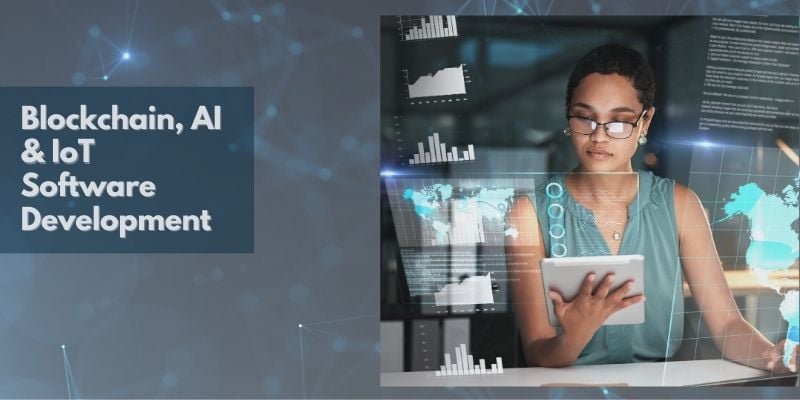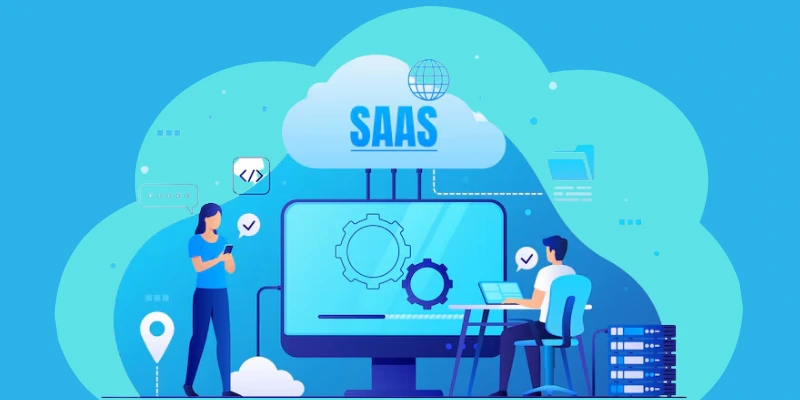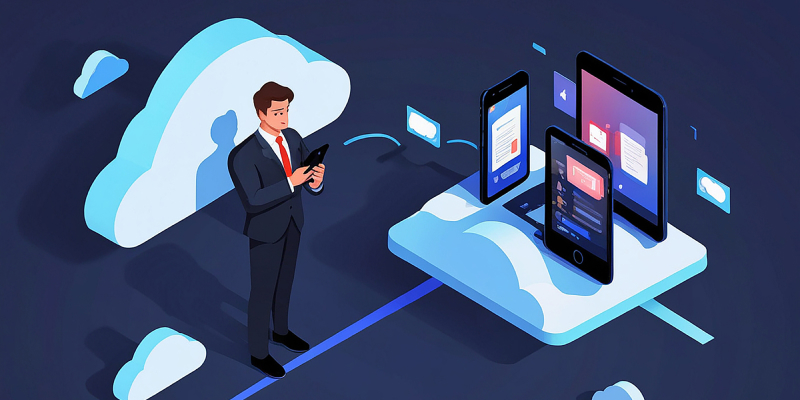Artificial Intelligence (AI) refers to the capability of computerized PCs or computer-controlled robots to perform tasks usually associated with intelligent animals. It refers to the process of developing machines with human-like cognitive capabilities, such as the capacity to think and perceive meaning, generalize, or learn from experiences.
Beginning with the introduction of the high-tech PC in the 1940s, researchers have shown that computers can handle challenging tasks, such as locating the proofs of mathematical hypotheses or playing chess with astonishing effectiveness. Despite the constant increase in computer processing and memory speed, no computer program has yet achieved the same level of human ad-hotness across more broad areas or tasks requiring extensive expertise.
A few projects have matched the capabilities of professional and human specialists when performing specific tasks. Thus, artificial intelligence drives applications as diverse as medical diagnosis, computer search engines, handwriting recognition, voice recognition, and AI chatbots.
Read About: Security Challenges in IoT Software Development and Possible Solutions
What Is IoT?
The Internet of Things (IoT) refers to a system of physical machines, devices, vehicles, and other tangible objects equipped with sensors, software, and network connectivity, which allows them to gather and share data.
IoT application development also known as "smart gadgets development," -can range from simple "smart home" gadgets like smart thermostats to wearables such as smartwatches and RFID-enabled apparel, as well as complex, modern transport frameworks and hardware. Technologists are, at any rate, envisioning entire "smart urban communities" predicated on IoT technologies.
IoT lets these smart devices communicate with each other and other internet-connected devices. In addition, gateways and smartphones form an extensive internet of interconnected devices that exchange data and separately accomplish various tasks. This includes:
-
Monitoring environmental conditions at farms
-
Controlling traffic design using innovative vehicles as well as other intelligent automotive gadgets
-
Controlling the cycle and machinery in factories
-
Monitoring inventory and shipments at warehouses
IoT app development company makes a significant change in software development and is widely used in various industries such as manufacturing, transportation, healthcare, and agriculture. As the number of internet-connected gadgets continues to increase, IoT will probably play an unquestionably significant part in shaping the world. It will change the way we do business, live, and communicate with one another.
Technology's convergence between Blockchain, Artificial Intelligence (AI),and the Internet of Things (IoT) has opened the door to innovative technological advancements. When taken together, these advanced technologies offer a huge potential to change industries, boost efficiency, and change how we interact through digital platforms. Custom software development companies are at the forefront of using this potential, but they are confronted with various opportunities and challenges in this ever-changing landscape.
Also Read: Ultimate Guide for Selecting Software Development Companies
Challenges in Blockchain, AI & IoT Software Development
Complexity and Interoperability:
One of the biggest difficulties is the complexity of integrating Blockchain, AI, and IoT systems. Each technology works differently and requires distinct methods and protocols. Interoperability between these different technologies is a major obstacle for developers.
Security and Privacy Concerns:
Security is paramount, particularly given the connectivity of IoT devices and the unchangeable nature of blockchain. The risk of vulnerability in IoT networks and the necessity of safeguarding the huge amounts of data created by these devices present major issues. In addition, the need to protect data security while leveraging AI algorithms can further complicate this problem.
Regulatory Compliance:
The ever-changing regulatory landscape is adding another layer of complexity. Different regions have different laws regarding data privacy, data handling, and use of the latest technologies. Being compliant and exploring the limits of innovation is an ongoing challenge.
Talent and Expertise Shortage:
The rapid development of technologies, such as blockchain, AI, and IoT development, has resulted in a need for more skilled specialists. Companies' challenges include finding and keeping the best talent with specialized knowledge in these areas.
Ethics considerations:
It is important to consider ethics before automating processes. Automation may negatively affect the human workforce and lead to biases in algorithms.
Lack of Control:
AI-driven code generation will give developers less control over the code. AI programs base their choices on the information they collect.
These data-based decisions might not be suitable for software developers. To prevent this, developers must be able to monitor their code.
Insufficient Data:
It is necessary to collect large quantities of data to train AI algorithms. Developing high-quality AI solutions more efficiently is possible if you have the necessary data, especially in AI programming.
Must Read: List of Software Development Companies in 2024
Opportunities for Software Development Companies
Innovation and Disruption:
Despite the difficulties, combining Blockchain, AI, and IoT offers a wide range of possibilities for new innovation. Intelligent contracts (Smart Contracts),decentralized apps (DApps),and AI-powered IoT analytics or predictive maintenance tools are only some of the examples. Companies can design innovative solutions that transform industries and provide substantial competitive advantages.
Efficiency and Cost Savings:
Integrating these technologies facilitates the automation of processes, streamlining them and reducing operational expenses. Intelligent supply chains, secure transactions, advanced analytics, and optimized resource utilization are a few avenues that companies can take advantage of to achieve impressive efficiency improvements.
Enhanced Customer Experience:
Using AI-driven information gained from IoT devices and ensuring safe transactions using Blockchain advancement services can offer customers secure and personalized experiences. These can include personalized recommendations, customized services, and enhanced user interfaces.
Market Expansion and New Revenue Streams:
Companies that successfully overcome the obstacles and tap into this potential can discover new revenue and market streams. Innovative solutions developed will open doors to new industries and lead to alliances or partnerships with established companies.
Investment in Research and Development:
Constant expenditure in R&D is essential to keeping up with technological advancements and developing innovative solutions that efficiently meet the market's needs.
Collaboration and Partnerships:
Collaboration with peers in the industry, tech companies, and academic institutions can help foster innovations, reduce challenges, and increase the scope of expertise.
Focus on Talent Development:
The process of developing and enhancing talents internally or through partnerships with educational institutions can help address the shortage of skilled workers.
Adaptability and Agility:
Staying flexible and agile in responding to technological advances and marketplace demands is vital to long-term achievement.
Read Also: Cost, Process and Time forCustom Software Development
Overcoming the Challenges in AI, IoT, and Software Development
It's crucial to ensure its AI integration goes smoothly. Begin by integrating a tool. As you observe its effects, you can add additional tools as needed. It is vital to improve the development process without disturbing it.
Check that your team members have been instructed to use these tools. Your team will achieve its full potential when it knows the strengths and weaknesses of each tool.
Be prepared for difficulties. AI adoption is a huge change. Initial resistance or challenges in understanding new technologies can be anticipated. By anticipating these difficulties and recognizing the challenges as learning experiences, it is possible to navigate the integration process with ease.
Keeping up with AI advancements is vital to remaining ahead of the curve in today's market. You can also benefit from AI in Healthcare software development by regularly updating software and adjusting to modifications. AI can become an indispensable partner, transforming software development as you progress.
Code Refactoring:
Refactoring can be a challenging yet essential aspect of programming. It is the process of cleaning and altering previously written code without changing its function. Manual refactoring is time-consuming and may result in errors and bugs that were not intended to exist.
Due to machine learning algorithms, these tools can learn from prior refactorings. They are more aware of the unique methods of coding and will be able to provide more effective and individualized refactoring recommendations. This continuous learning approach helps improve the efficiency of the code while keeping a personal feel.
AI's contribution to refactoring code goes beyond simplifying and personalizing. It helps make coding more consistent. AI lets developers apply uniform coding styles and standards for their work. This allows developers and codebase administrators to work together and comprehend.
Code Review & Quality Assurance:
AI can also transform the process of reviewing code, which is an essential component of software development. It has been a major burden on developers' time since it ensures that bugs are identified, maintains code consistency, and maintains overall quality control.
AI can make this process quicker and more complete. It can learn about previous reviewers, thereby increasing its effectiveness as time passes. Furthermore, these advanced technologies will find mistakes that even the most meticulous human reviewers could have missed.
AI can drastically reduce the time required to write manual test cases for Quality Assurance. AI-powered predictive analytics can detect potential issues in code by analyzing past data. This proactive approach leads to a more consistent, efficient, and reliable QA procedure.
Simplifying Complexities:
AI-based development company play a significant role in changing industries and have had a major influence on software development. It is having a profound impact on the way we code. It changes the game by simplifying complex tasks, thereby making programming and streamlining more efficient. AI's impressive advances in reviewing code, quality assurance, and code refactoring are proof of this transformation.
Develop an Existing Architecture:
It is vital to use an updated architecture when designing software. Developers should build an architecture that utilizes AI algorithms and techniques to integrate different systems more effectively.
Leverage API Technologies:
API technology can reduce the amount of code created for repetitive tasks whenever AI algorithms are employed during software creation. APIs enable developers to connect various AI Services.
Use Containers:
Developers can quickly remove and spin the containers to lessen the effect of integrating the system infrastructure.
Leverage Cloud Platforms:
Cloud platforms enable remote developers to gain access to powerful tools and systems to develop and use AI technologies.
AI Service Providers:
AI service providers can assist developers in overcoming integration challenges when working with AI algorithms. They provide the technology and resources required to integrate AI into existing systems.
Also Read: A Comprehensive Guide To Software Consulting in 2024
What Are The Benefits of Blockchain, AI & IoT Software Development
Integrating AI and IoT technologies collects all information and sends it to the cloud or any other online storage facility. In addition, AI serves as the brain of IoT and AI, helping machines to make decisions and enabling them to complete tasks on their own.
We will explore five distinct advantages of AI and IoT that could transform the way companies work and consider using AI in conjunction with machine learning.
Increased Customer Relationships:
If implemented properly, the advantages of using AI and IoT benefit employees and enhance customers' experiences. Companies are using these technologies to gather vast amounts of information and customize offerings and products to meet customers' needs. In addition, businesses are automatizing the entire data integration process so that customers get immediate feedback on time.
Effective Profitability:
Following the COVID-19 climate, most software development companies are pressured to cut costs while not decreasing productivity. AI and IoT could be ways to cut costs for the company. Ultimately, AI and IoT can quickly analyze and collect information to determine if an item or process is too costly to keep.
Access to data early lets businesses realize cost savings without sacrificing performance. Recognizing cost drivers permits an organization that develops custom software development to make changes that reduce costs. Furthermore, this new technology helps leaders reduce unnecessary costs and streamline business processes.
Increased Operational Efficiency:
Incorporating AI in IoT applications created by an IoT company that develops apps will improve operations efficiency. AI can analyze massive amounts of data in just a few minutes and provide recommendations based on the results of the audit conducted to increase the effectiveness of the facilities.
In addition, businesses are using this tech to improve productivity. AI or IoT, software development companies, can detect inefficiencies and suggest optimal practices for improving productivity.
McKinsey discovered that 82% of businesses using machine learning or AI saw a return on investment.
Extremely Safe and Secure:
Combining AI and IoT can offer additional security and reduce workplace accidents. By integrating machine learning in machine-to-machine interfaces, companies can spot possible security risks and react promptly.
Sensors connected to the internet can be used to spot dangers in the environment and ensure safety without requiring employees to be aware of them. Thanks to AI service providers from the USA, a hygienic and secure working environment is possible. Numerous applications that work with IoT and AI will also assist organizations in identifying and managing risks, such as security threats to employees, cyber attacks, and financial losses.
Focus On New Products And Services:
Artificial intelligence, in combination with IoT, will open the way for a range of innovative products and services offered by an artificial intelligence solution firm. Analyzing large numbers of people aids organizations in making intelligent decisions based on circumstances. Natural Language Processing Services (NLP) lets people speak using machines instead of human interaction, but in an efficient and high-quality manner. AI is an ideal supplement for IoT deployment, which allows for superior products and services that give you an advantage in the marketplace.
Also Read: IoT Application Development Everything You Need to Know
Applications Where AI, IoT, Blockchain Implements
Freight transportation:
Shipping freight around is a complex process involving multiple parties with varying priorities. An IoT-compatible blockchain can save temperatures, positions of arrival times, status, and temperature of shipping containers during their move.
Blockchain transactions that are mutable help ensure that everyone is confident in the information and can act swiftly and effectively to move goods.
Tracking components and ensuring conformity:
The ability to monitor components used in automobiles, aircraft, or other items is crucial for safety and regulatory conformity. IoT data stored in shared blockchain ledgers allows everyone to view a component's provenance.
Transmitting this info to shippers, regulatory agencies, and manufacturers is cheaper and more efficient.
Log operational maintenance data.
IoT devices monitor the level of security for equipment and their maintenance. From elevators to engines, blockchain is a secure record of the operational data and subsequent maintenance.
Third-party repair providers can monitor the blockchain for preventive maintenance and track their work on the blockchain. Operations records can also be shared with authorities to ensure compliance.
Agriculture:
The application of IoT in agriculture is gaining popularity, with a focus on controlling yield and crop growth. By using sensors, farmers collect data on temperatures, soil moisture, and other environmental variables that influence plant growth. After analyzing this data, they can improve their irrigation techniques to maximize yields while minimizing waste.
Research shows that the market for smart agriculture is projected to grow to US$25.4 billion by 2028, growing at a rate of 9.4 percent from 2023 until 2028. The technology most followed in modern agriculture is IoT 2028. Integrating IoT and AI into aquaculture is one of the driving forces behind intelligent agriculture initiatives.
Smart Cities:
Smart cities are the latest innovations that use IoT applications to significantly improve infrastructure. Integrating various sensors, such as environmental sensors and traffic cameras, along with waste management companies, is an essential component of enhancing people's lives overall.
Innovative technologies like smart traffic can ease the burden on the roads while also improving the quality of air in the local area. Likewise, integrated systems for managing household waste can reduce waste, and surprisingly, high recycling rates can improve environmental efficiency.
The growth rate will be 312 billion dollars by the year 2026, up from $130 billion at the start of the global IoT deployment, thanks to a rapid expansion with a CAGR of about 19% during the period of forecasted growth during the late 19th century.
Digital Twins of Worms:
A digital twin that became known as a popular concept in 2020 provides an instantaneous simulation of any process or object. It is used for many purposes for diagnosis of disease monitoring, quality, and management of asset performance analysis. In 2025, the market expansion for digital twins is expected to continue high.
As per Fortune Business Insights, the global market for digital twins will be worth $6.75 billion in 2021. It will show a CAGR of 40.6 percent, meaning that the market will grow to $96.49 billion in 2029. be driven by intelligence in the field of data processing.
Wrapping It Up
This convergence of Blockchain, AI, and IoT creates a new landscape with opportunities and challenges for software development firms. In navigating the challenges of security, interoperability, or regulatory compliance, taking a leap at the latest technologies and using them will open new possibilities to boost efficiency and improve customer experience. Through investing in R&D and collaboration, nurturing talent, and ensuring that they can adapt, businesses can prepare to succeed in the new era of technology. Success is based on the ability to tackle obstacles while leveraging the power of these advanced technologies to develop innovative solutions that transform industries.












Share this blog